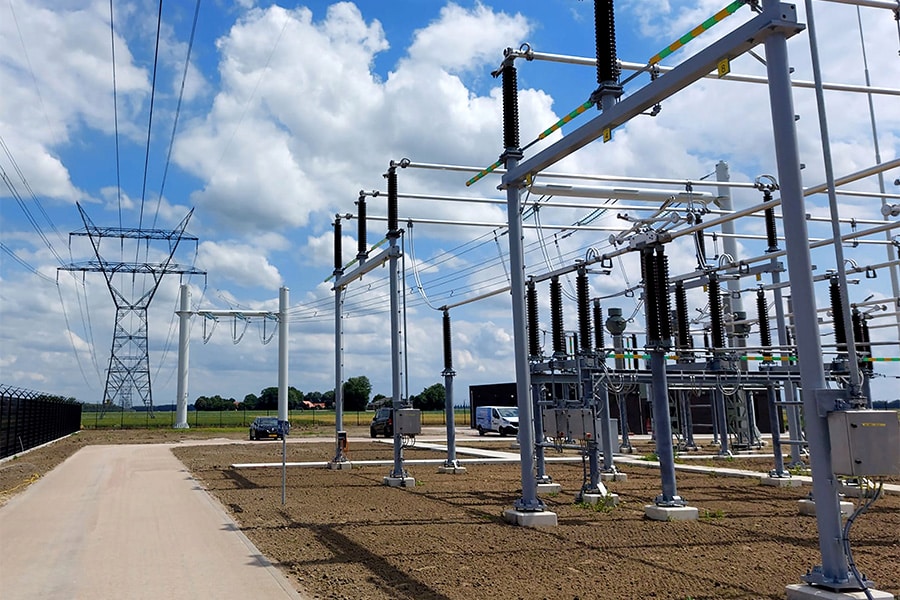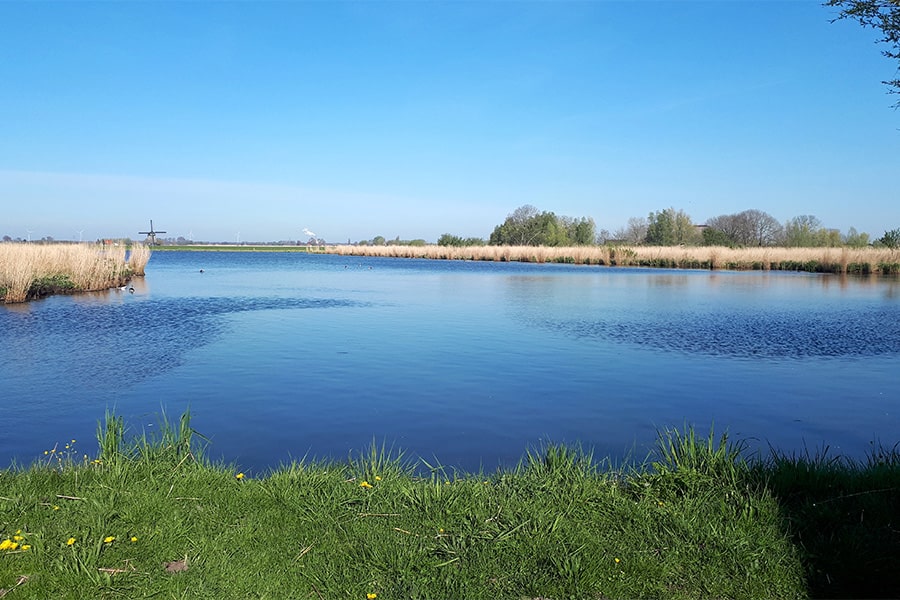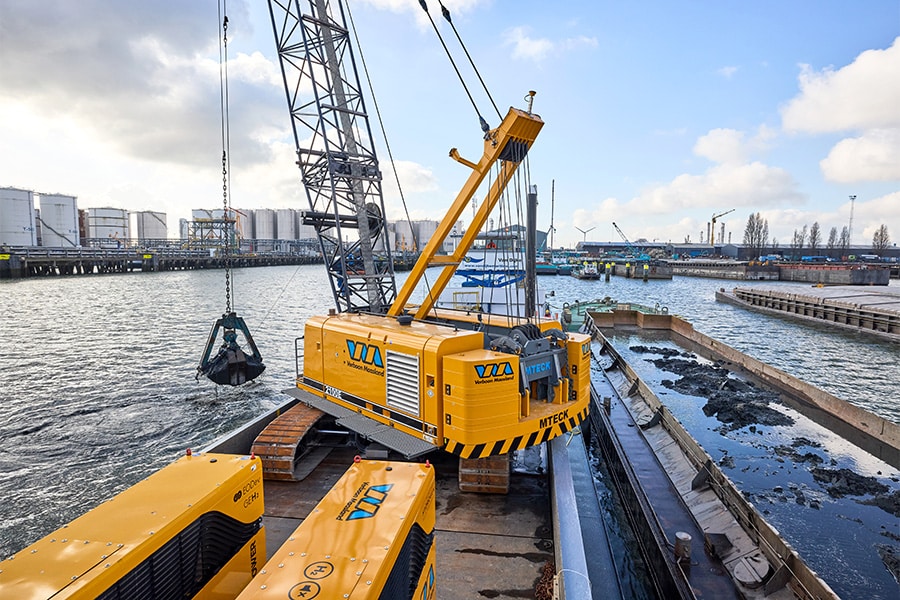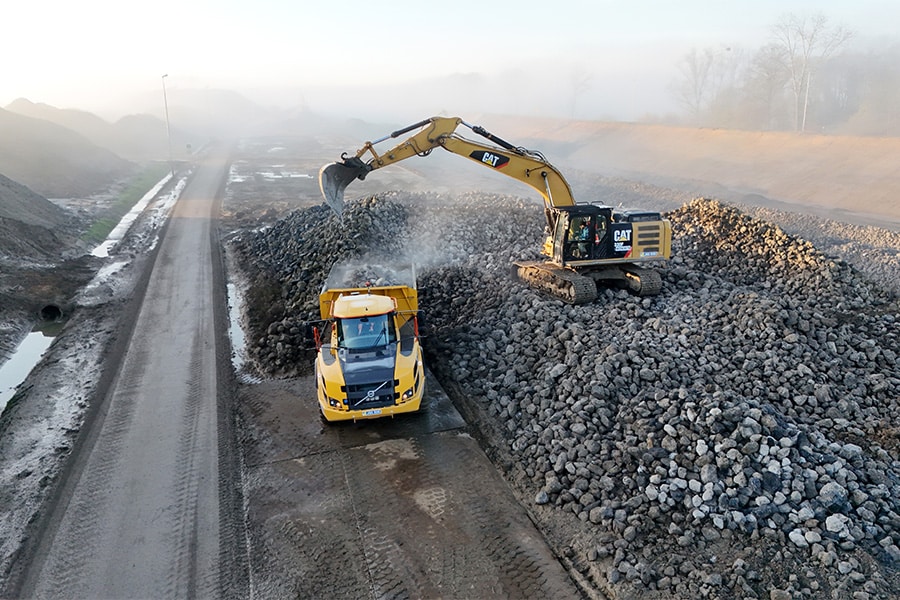
Juliana Canal: a challenge to keep everything logistically safe
On behalf of Rijkswaterstaat, contractor Van den Herik-Sliedrecht is working on the deepening and widening of 4 kilometers of the Juliana Canal between Berg aan de Maas and Born. The project is so large that it has been divided into three work sections; North, Middle and South. Jac Rijk was asked to do the earthmoving in the 1.5-kilometer-long Midden project area.
"Limburg is not unknown territory for us. We are familiar with the specific foundation and soil conditions. The latter is quite an issue with the Juliana Canal. It was once built on the existing ground level and in a different way than it is today." Speaking is Anders Ooms, project manager at Jac Rijk. With a small team of four men, he handles everything around earthmoving in work section Midden. "We have done many large earthmoving projects together with Van den Herik. In 2018, for example, we worked together on the widening of the Juliana Canal near Elsloo."
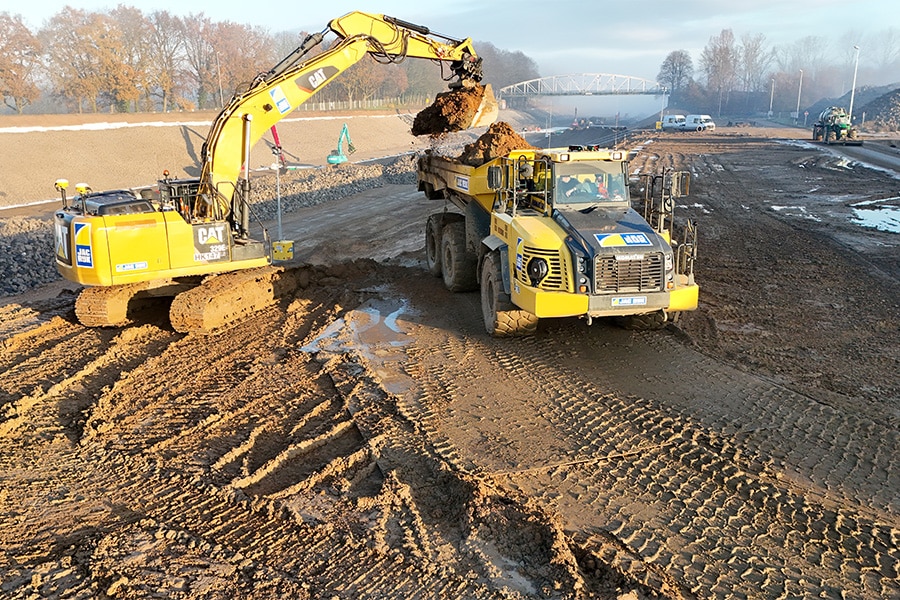
Family business
Family business Jac Rijk, as Anders describes it, has been on the road for quite a while. Founded in 1933, the third generation is now at the helm. Originally, the company is active in the world of earthmoving, mineral extraction, hydraulic works, road and dike construction. The projects they are involved in go far beyond our national borders. From Bauxite excavation in Suriname and road construction in Africa to beach replenishment in Taiwan. Closer to home, Jac Rijk is involved in the construction of Maasvlakte II, a dike improvement in Breskens and, in a more distant past, the old ENCI limestone quarry near Maastricht.
Getting started with work plan
In April 2024, Anders and his team started work where Van den Herik asked them the question "Do you want to make a work plan for the earthmoving in the Middle Box? This work plan included construction of the work road, construction of the driveway into the canal, phased excavation of the embankments, profiling of the embankments, installation of bentonite mats and installation of the crushed stone. "It involves all facets of earthwork. A lot of cubic meters in a short time, but also hydraulically rebuilding a quality product to get a watertight channel. That presents challenges. There has always been talk of a waterproofing layer. We are building in such a way that it will be virtually watertight. That's how high the bar is set. All of us are working toward it lasting well over a hundred years."
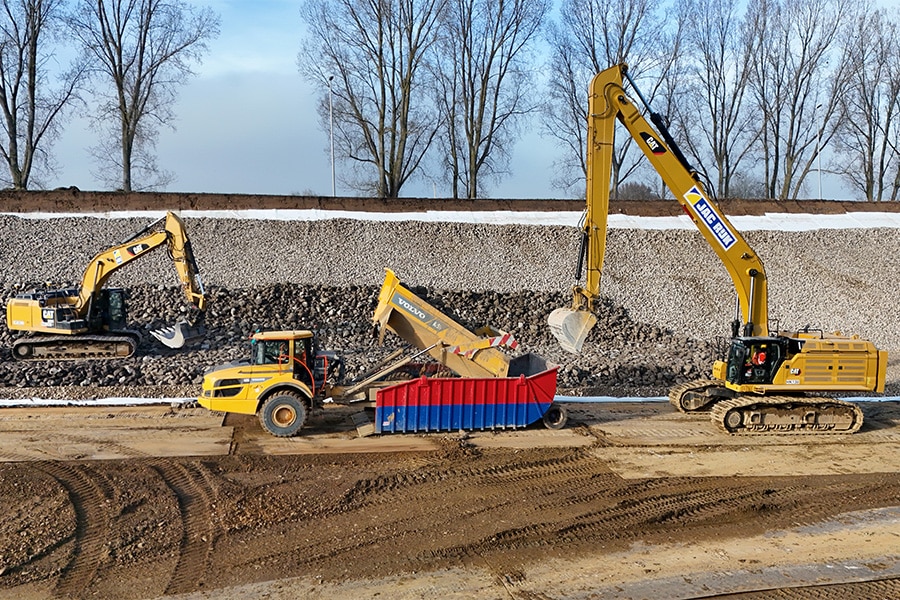
Three goals
Within the project, there are three major goals: safety, quality and speed. "That last one, speed, actually contradicts the other two. But it was requested. That makes it a challenge to logistically keep everything as safe as possible. That you put down quality work and still with the speed that is asked for and the time pressure behind it to be finished on time. The trick is to get everything done planning-wise so that the water can flow back into the Juliana Canal in April 2025."
Narrow work area, many transport movements
Within the theme of safety, Jac Rijk chose to construct a center lane 12 meters wide. This is wide enough for two trucks to pass each other safely. The traffic also has fixed driving routes and one-way traffic has been applied. This keeps cross traffic to a minimum. These measures are no luxury. "The middle section is a fairly narrow section less than 40 meters wide, within which a lot of soil has to be transported. So we are dealing with a lot of cubic meters of soil and transport movements. At the peak of the work, there were about 600 transport movements per day in a work section 1.5 kilometers long. On the busiest days in late 2024, we were working in the canal with 38 machines in section middle." So every day Anders consults with his people: Who are working today? What work will intersect?
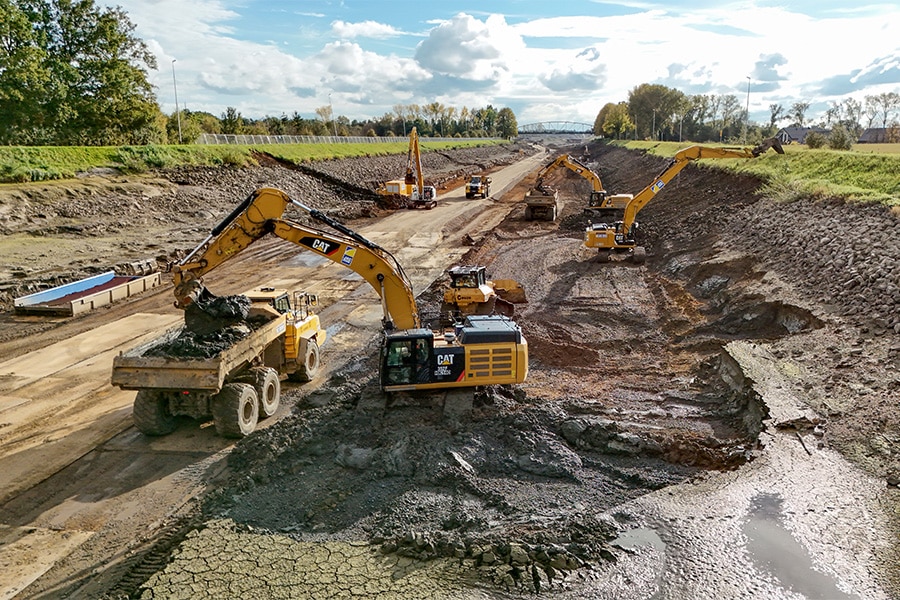
Different soil flows
In terms of quality, the various soil flows required much attention. Prior to the work, thorough soil testing was carried out in the middle section. This included a distinction between industrially contaminated soil, Category 1 clay, gravel and sandy material.
"These different soil streams have to be excavated and transported separately to the appropriate depots. We also have to ensure that everything is delivered in separate soil streams. In total, we moved 240,000 m3 of soil for which we had limited depot space. The challenge was to be able to salvage everything."
Striking differences between work sections The differences in soil conditions on the more than 4 km long section were striking. In section North a lot of polluted silt was found, in section South the soil consisted mainly of sand and in section Middle the soil was relatively hard with a lot of gravel. "Gravel is beneficial for water management in view of the wet period, autumn and winter, in which we are working. Thanks to the gravel, most of the rainwater soaks into the ground. That benefits us. In addition, there was a fault line in the middle, where the groundwater level was a lot lower than in South.
On the fault line, we found mostly more sandy clay."
Collaboration
Jac Rijk is working as a subcontractor. And a flexible attitude is required of subcontractors. "That is also the strength of Jac Rijk. We are dynamic and move with what is happening at the time. On the Julianakanaal project, we work with a small project team of four people. That way the lines are short and we can switch quickly." As an example of fast switching, Anders gives the good cooperation between the work sections North, Middle and South. "The earthmoving was reasonably smooth and problem-free in our section. This allowed us to assist in section North where a lot of silt had to be excavated and removed. In the interest of the team, you support each other where and when necessary."
Team forging together
Anders experiences the Juliana Canal as a special project where dry earthmoving, hydraulic earthmoving and stone construction come together. "Here the expertise of our people comes to the fore and we can show what we have to offer. We have quite a lot of machinists in house, but we couldn't do this alone. The challenge was to forge a good team in a very short time with professionals from other contractors we work with. Right from the moment Van den Herik invited us, we set our lines and put together the team we thought we needed. And if that then works out and everyone understands each other and is working well, that's very decisive in making a beautiful job."
